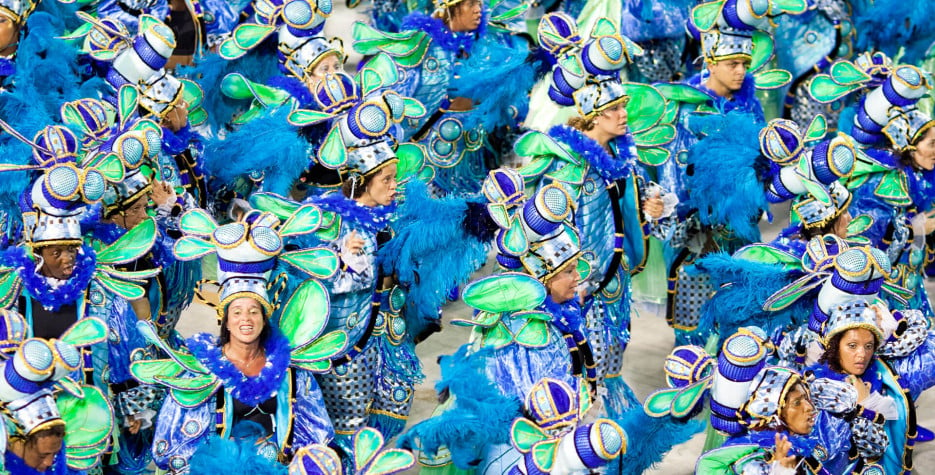When is Carnival in Brazil?
The Carnival is an annual festival in Brazil held across the four days before Ash Wednesday.
The Monday and Tuesday are holidays. The festival is the most popular event of the year in Brazil and represents the last chance to party and overindulgence before the fasting period of Lent begins on Ash Wednesday.
And even though a pre-lent carnival is a common festival throughout the world in countries with a large Roman Catholic population, it is Brazil where Carnival becomes the so-called 'Greatest Show on Earth'.
The Carnival holidays are not nationwide public holidays in Brazil. Brazil has a system where regions can add a number of holidays in addition to the specified national holidays. Most regions choose the Carnival Days as state holidays but not all - in some cities in the south life goes on, as usual, every year. The Carnival Days are usually Federal Holidays, with government employees having the days off.
In addition, many companies and unions have agreements with employees to make up work hours for the Carnival Days and Ash Wednesday morning, thus creating a long holiday weekend for many people.
History of Carnival in Brazil
During the 40 days before Easter, Roman Catholics are supposed to abstain from all bodily pleasures, including the consumption of meat. This is intended to remember the fasting of Jesus, who spent 40 days in the desert before beginning his ministry. Indeed, it is proposed by some that the word carnival is derived from the Latin 'Carne Vale' which means a farewell to meat signifying the coming period without meat.
The first records of a Carnival in Rio date back to 1723, when Portuguese immigrants would take to the streets to throw water at each other.
Despite its original religious beginnings, the carnival can hardly be described as a solemn affair, and it shares its excessive nature with similar European celebrations and Mardi Gras, where the festivals are an opportunity for final indulgence before lent itself.
It is likely that these celebrations can be traced back to older pagan feasts celebrating the arrival of spring, though with Brazil being in the Southern hemisphere, it is actually the end of summer at the time of Carnival.
How is Carnival in Brazil celebrated?
The most eye-catching celebrations take place in Rio de Janeiro along the Copacabana beach where parades and pageants start on the Saturday and carry on for the four days of the festival. The main parade starts on the Sunday, when the samba schools compete in the Sambadrome. Each school may have up to three thousand participants which gives an indication of the huge scale of the event. It is said that the Carnival generates over $1 billion in revenue for Brazil.
Tourists visiting Rio for the carnival can actually take part. They pay upwards from $500 to buy a Samba costume and dance in the parade through the Sambadrome with one of the schools. The money from the fee is used to buy the tourist's costume and also to buy costumes for people who do not have the money to afford their own costumes.


